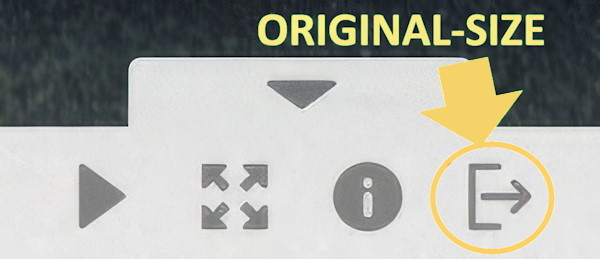Summary: In this article I will compare the Google Pixel 8 Pro to the popular Tamron 17-70mm f2.8, the 35+ year old Carl Zeiss 28-85mm f3.3-4 and the incredible Samyang 135mm f1.8. Click on the image to enlarge …
Is it fair to compare the Pixel 8 Pro camera with those extraordinary lenses?
Radio Yerevan would probably answer: In principle yes, but …
Let’s take a look at several lens disciplines. The Samyang 135mm f1.8 and Carl Zeiss 28-85mm f3.3-4 full-frame lenses were used on a Sony a7cii camera. The Tamron 17-70mm f2.8 APS-C lens was used on a Sony a6400 camera.
Object separation and Bokeh of Google Pixel 8 Pro vs. Samyang 135mm f1.8 e-mount full frame lens

After some trial and error, these two Pixel 8 Pro photos on the right had the best object separation achievable. The photo on the far right was taken in Pixel 8 Pro portrait mode, with additional computational object separation. Because the results are so far away from what can be achieved with good full-frame lenses like the Samyang 135mm f1.8, bokeh photos with high object separation shown above from the vintage car event would, in my humble opinion, be impossible with the Pixel 8 Pro smartphone camera. Nevertheless, I am eager to test the Pixel 9 Pro in this discipline when it becomes available.
Google Pixel 8 Pro Bullseye Bokeh
The Google Pixel 8 Pro has a bullseye bokeh that is very reminiscent of the so-called bullseye (aka Butzenscheibe in German), the thicker central area around the pontil mark of Crown Window Glass, which was used for less expensive windows.

In my personal view, because of the strong bullseye bokeh of the Google Pixel 8 Pro, which is anything else than a creamy and smooth, the approx. 120mm full-frame equivalent telephoto lens of the Pixel 8 Pro phone is definitely not well suited for shooting nice bokeh photos.

Google Pixel 8 Pro sharpness comparison to the Tamron 17-70mm f2.8 APS-C lens and the Carl Zeiss Vario-Sonnar 28-85mm full frame classic lens![Pixel 8 Pro bokeh vs. Tamron 17-70mm f2.8 vs. Samyang 135 f1.8 vs. Carl Zeiss 28-85mm f3.3-4 lenses Pixel 8 Pro bokeh vs. Tamron 17-70mm f2.8 vs. Samyang 135 f1.8 vs. Carl Zeiss 28-85mm f3.3-4 lenses]()
Let us use a Ukrainian postage stamp featuring British artist Banksy’s mural in Borodianka, approx. 30km northwest of Kyiv, in our lens sharpness test sheet. The stamps have an excellent fine print quality that allows for photo lens comparisons. Click on the image to enlarge …
Read more about Banksy’s activities in Ukraine here on BBC News: https://www.bbc.com/news
I added Google Pixel 8 Pro photos with 50- and 48-megapixel resolution in Pro mode and 24mm and 120mm focal length. The open aperture of f4 on the Zeiss full-frame lens compares quite well to the open aperture of f2.8 on the Tamron APS-C lens, considering a crop factor of about 1.5.
When you click on an image in the galleries, following buttons will allow you to select some features. Use Original-size to watch the photo in full resolution:

Slideshow | Fullscreen | Image-Info | Original-size
For comparison, photos were taken with the Carl Zeiss and Tamron lenses at 35mm and 85mm full-frame equivalent focal lengths at the center and corners of the lens. The Pixel 8 Pro phone camera was shot at 25mm and 120mm full-frame equivalent focal lengths with the Hi-Res option enabled in the Pixel Camera app’s PRO mode to capture high-resolution images at 50 and 48 megapixels. Any non-Hi-Res photo mode or focal length between 25mm and 120mm will produce a 12-megapixel photo from the Pixel 8 Pro camera that is too far off in image quality to be meaningfully compared to the Zeiss and Tamron photos.
Summary
Here are my insights I gained from this comparison:
- The fixed aperture Pixel 8 Pro mostly uses computational efforts to create artificial bokeh and subject separation, which does not come close to the optical and amazing bokeh of the Samyang 135mm f1.8 e-mount lens.
- The bullseye bokeh of the Pixel 8 Pro is not really pleasing. But I cannot wait to see what the Google Pixel 9 Pro can do with bokeh.
- I will use the Google Pixel 8 Pro only with 50- and 48-megapixel resolution in it’s camera Pro mode and 24mm and 120mm focal length (not considering the ultra wide lens here and no usage of “in-between” computational zooming). Otherwise I would end with 12 megapixel resolution photos, which do not meet my expectations in image resolution and quality.
- For landscape photos in good light conditions and with no object separation, the Pixel 8 Pro is on par with my Sony full-frame and APS-C lenses and sensors.
- The best camera is the one that’s with you, and the Pixel 8 Pro is an impressive camera with a super small form factor. The Pixel 8 Pro takes amazing photos – despite its limitations compared to full-frame and APS-C sensors and lenses.
The above assessments are not statements of fact, but merely my own humble private opinions.
Bokeh photos of the popular Tamron 17-70mm f2.8 APS-C lens taken at the a German vintage car event in 2023
Bad bokeh? Tamron 17-70mm f2.8 lens bokeh review shooting classic cars
Take a closer look at the famous Carl Zeiss Vario-Sonnar T* 28-85mm f/3.3-4 classic zoom lens
Best Zeiss Zoom Lens? Review of the Carl Zeiss Vario-Sonnar T* 28-85mm f/3.3-4 classic lens
Don’t hesitate to leave a comment below
Your comments are highly valued. Please note that comments undergo manual verification to prevent spam, which may cause a delay in their appearance.
Der Beitrag Unfair comparison of the Pixel 8 Pro with the Tamron 17-70mm f2.8, Carl Zeiss 28-85mm f3.3-4 and Samyang 135 f1.8 lenses? erschien zuerst auf Swiss-1 Tech 🇨🇭.
